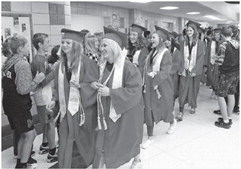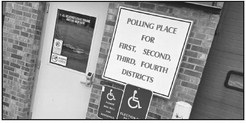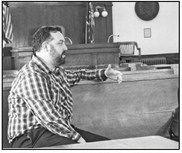Use surplus to help young people get a fresh start


Rather than squander the state budget surplus, the money should be used to help recent high school graduates get a fresh start in life and in the process make an investment in the longterm health of Wisconsin business and industry.
When the 2021-2022 state of Wisconsin fiscal year ends next week, state coffers will have a surplus of $3.8 billion dollars. Unless you are rich enough to fund a private space program, $3.8 billion is a lot of money.
Fueled by a roaring economy, this year the state collected more in sales and income taxes than was budgeted by a very large margin.
The challenge facing state government officials is what to do with this money that will do the most good for the state. In recent years there has been a focus on building up a “rainy day” fund which will help stabilize the state’s budget in future economic downturns. This has been done and the fund is currently at its highest level ever at about 8.4% of state spending.
While there are some, such as Forward Analytics director Dale Knapp, who have advocated raising this level to 15 to 16%, the actual benefit of sitting on a large pile of unused cash is questionable. If tax dollars are to be collected they should be designated for a purpose for the public good, rather than just existing to make actuaries sleep better at night.
A good use of a larger portion of this funding would be to focus on helping Wisconsin high school graduates have a fresh start in life. The state should use these funds to set up an endowment that would provide a grant to high school graduates to help them get a start in life. The money could be used for things like helping with the purchase of a vehicle from a Wisconsin-based car dealer, helping pay for tuition to a public or private accredited Wisconsin educational program or go toward apprenticeship or trade program expenses such as the purchase of tools. According to the UW-System, the state has been averaging about 65,000 high school graduates a year.
The state could use the existing Wisconsin Retirement System bureaucracy to manage the fund. With the WRS already managing nearly $130 billion in assets, managing the additional funds could be easily handled. The WRS has averaged a nearly 11% rate of return on investments in the past decade and is considered by national experts to be among the best managed funds of its type. Based on a similar rate of return, it would allow payments to each new high school graduate in excess of $5,000.
Since the funds would have to be used for a Wisconsinbased program or Wisconsin-based business, there would be an overall benefit to the state economy as well as provide a major incentive to complete high school.
A Wisconsin Fresh Start would create a focused return of surplus tax funds and work to keep young people in the state at a time when the state is faced with an aging workforce and continued depopulation of rural communities.




